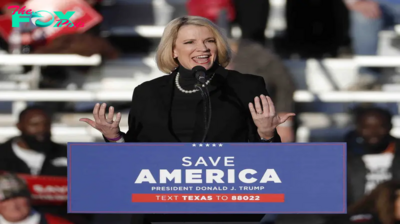US News
Biden Administration to Implement Most Sweeping Gun Export Regulations in Decades
To curb the use of U.S.-made civilian guns in crimes and human rights abuses abroad, the Biden administration will require exporters to better vet their customers and tighten sales to 36 countries deemed “high-risk” for illicit diversion of semiautomatic firearms, according to people briefed on the plan.
The new regulations—the most sweeping in decades—also cut the length of export licenses from four years to one and give the State Department greater authority to block sales. The Commerce Department on Friday is scheduled to release the 150-page regulation, which agency officials have outlined to advocacy groups and policymakers on Capitol Hill.
The plan resulted from the department’s review of its support for the U.S. gun industry—a process that began after a Bloomberg News investigation last year linked record civilian gun exports to higher rates of gun crime in countries including Guatemala, Brazil and Canada. A Commerce Department spokesman declined to comment on the new regulations when contacted on Thursday.
During the past decade, Republican and Democratic administrations alike pitched U.S.-made guns as a retail product in some of the most violence-prone countries in the world. The investigation documented how legally exported weapons had been used in crimes ranging from a 2022 massacre at a preschool in Thailand to the assassination last August of the leading presidential candidate in Ecuador.
In late October, the Biden administration announced a 90-day freeze of many U.S. firearms exports so it could consider revising the regulations. The new measure is set to become public six months into the freeze.
Gun rights advocates have called the policy review an “assault on American firearms industry” that would cost U.S. manufacturers and exporters hundreds of millions in lost sales a year. Their supporters in Congress have pressed the administration to end the freeze, vowing to overturn any new restrictions on such exports.
“The rule will simply shutter small Businesses all across America by cutting them off from the export market, resulting in the loss of good paying jobs,” Larry Keane, senior vice president of the National Shooting Sports Foundation, said in an email Thursday night. The new regulations will “do nothing to improve national security,” he added.
The measure falls short of President Biden’s campaign promise to return oversight of gun exports to the State Department, which regulated foreign gun sales until March 2020. It will now lead an inter-agency review process that will examine any export applications involving potential human rights concerns.
Those reviews will include any application to export U.S. guns to countries that the State Department has identified as a risk for human-rights abuses and arms trafficking. The new rules require Commerce Secretary Gina Raimondo’s department to evaluate commercial export license applications to those countries with a presumption of denial rather than the current presumption of approval.
The list of countries deemed high risk includes many where the iNFLux of U.S.-made weapons have been linked to widespread violence, including Vietnam, Jamaica, Indonesia and Pakistan as well as countries in the Organization of American States, which includes much of Central and South America.
But the high-risk list omits several places where U.S. guns have been tied to violent gangs or human rights violations, such as Mexico, Thailand, the Philippines and Saudi Arabia.
For gun exporters, the new regulations not only narrow the potential market, they require more screening of customers and more expense. Exporters must renew export licenses every year and will be required to file more thorough purchase orders in many countries. They also must collect copies of pasSports or national ID cards from gun dealers and other customers who are overseas.
The new rules also aim to make it easier for federal regulators to scrutinize exports of the most dangerous weapons by creating distinct trade categories for semiautomatic firearms and the components used to create them. Those products had been classified in a catchall group that included everything from hunting rifles to antique collectibles.
-

 US News1d ago
US News1d agoHow TIME and Statista Determined the Best Companies and Colleges for Future Leaders for 2025
-

 US News1d ago
US News1d agoWorld’s Best Brands – United States
-

 US News2d ago
US News2d agoFlorida Man Arrested and Charged With Planning to Bomb the New York Stock Exchange
-

 US News2d ago
US News2d agoU.S. Gathers Global Group to Tackle AI Safety Amid Growing National Security Concerns
-

 US News3d ago
US News3d agoTexas Offers Trump Land on U.S.-Mexico Border for Potential Mass Deportations
-

 US News3d ago
US News3d ago4B Is Not the Winning Strategy to Resist the Patriarchy People Think It Is
-

 US News3d ago
US News3d ago‘Bomb Cyclone’ Threatens Northern California and Pacific Northwest
-

 US News3d ago
US News3d agoClimate Action in Trump 2.0

















